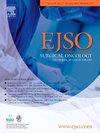2000年至2021年美国原发性恶性脑肿瘤患者的死亡原因
IF 3.5
2区 医学
Q2 ONCOLOGY
引用次数: 0
摘要
目的研究原发性恶性脑肿瘤患者的死亡原因与日历年、患者年龄和诊断后时间的关系。方法从监测、流行病学和最终结果项目中确定2000年至2021年间诊断为12种原发性恶性脑肿瘤的患者。死亡原因,包括25种非癌症原因,与日历年、患者年龄和诊断后时间有关。计算标准化死亡率(SMRs)以确定与一般人群相比的相对死亡风险。结果在最终队列的96798名患者中,68998名患者在随访期间死亡。其中,92.2% (n = 63,624)死于确诊的脑肿瘤,7.2% (n = 4946)死于非癌症原因,0.6% (n = 428)死于后续癌症。主要的非癌症死亡原因是心脏病(884例)和脑血管疾病(365例)。恶性脑膜瘤和毛细胞星形细胞瘤的非癌性死亡比例最高。从2000年到2021年,胶质母细胞瘤患者中不同死因的死亡比例保持稳定,而其他脑肿瘤患者的相对非癌症死亡人数有所增加。当按年龄分层时,主要非癌症死亡原因的smr在年轻患者中尤其高。smr在诊断出癌症和大多数非癌症死亡后的第一年达到顶峰。癌症死亡的1年生存预测AUC为0.811 (95% CI: 0.807-0.815),非癌症死亡的AUC为0.682 (95% CI: 0.678-0.686)。开发了一个预测工具,并公开提供外部验证(https://malignantbraintumors.shinyapps.io/calculator/)。结论:本研究对死亡原因提供了有价值的见解,并可能为旨在改善患者预后的综合护理指南的制定提供信息。本文章由计算机程序翻译,如有差异,请以英文原文为准。
Causes of death among patients with primary malignant brain tumors in the US from 2000 to 2021
Objective
The aim of this study was to characterize the causes of death among patients with primary malignant brain tumors in relation to calendar year, patient age, and time after diagnosis.
Methods
Patients diagnosed with 12 types of primary malignant brain tumors between 2000 and 2021 were identified from the Surveillance, Epidemiology, and End Results program. Causes of death, including 25 non-cancer causes, were characterized in relation to calendar year, patient age, and time after diagnosis. Standardized mortality ratios (SMRs) were calculated to determine the relative risk of death compared to the general population.
Results
Of the 96,798 patients in the final cohort, 68,998 died during the follow-up period. Among these, 92.2 % (n = 63,624) died from diagnosed brain tumors, 7.2 % (n = 4946) from non-cancer causes, and 0.6 % (n = 428) from subsequent cancers. The leading non-cancer causes of death were heart diseases (n = 884) and cerebrovascular diseases (n = 365). Patients with malignant meningioma and pilocytic astrocytoma exhibited the highest proportions of non-cancer deaths. The proportion of different causes of death remained stable among patients with glioblastoma from 2000 to 2021, while there was an observed increase in relative non-cancer deaths among patients with other brain tumors. When stratified by age, SMRs for the leading non-cancer causes of death were particularly higher among younger patients. SMRs peaked in the first year following diagnosis for both cancer and most non-cancer deaths. The AUC of 1-year survival prediction was 0.811 (95 % CI: 0.807–0.815) for cancer deaths and 0.682 (95 % CI: 0.678–0.686) for non-cancer deaths. A prediction tool was developed and publicly available for external validation (https://malignantbraintumors.shinyapps.io/calculator/).
Conclusion
This study provides valuable insights into the causes of death and may inform the development of comprehensive care guidelines aimed at improving patient outcomes.
求助全文
通过发布文献求助,成功后即可免费获取论文全文。
去求助
来源期刊

Ejso
医学-外科
CiteScore
6.40
自引率
2.60%
发文量
1148
审稿时长
41 days
期刊介绍:
JSO - European Journal of Surgical Oncology ("the Journal of Cancer Surgery") is the Official Journal of the European Society of Surgical Oncology and BASO ~ the Association for Cancer Surgery.
The EJSO aims to advance surgical oncology research and practice through the publication of original research articles, review articles, editorials, debates and correspondence.
 求助内容:
求助内容: 应助结果提醒方式:
应助结果提醒方式:


